-

Micromen Try To Explain Womens Rugby
The Micromen Aaron and Sam are back but this time they're getting ready for the Womens Rugby World Cup! They get in their stretches and facts about the exciting upcoming sports showdown right here in Aotearoa. Facts, No Cap by Micromen bring you the rundown on hot topics!
-

The history of Surfing - Cultural Reset
Young Lofa Stanley breaks down the history of Surfing in the Pacific for us. The first wave riders came from the Pacific and can be traced back to the 12th century while the first written record of people surfing was in Captain Cook's diary in the late 1700s after seeing it done in both Tahiti & Hawai'i. Find out more in the video above. - "Cultural Reset" unpacks relevant social and political issues, and how they're tied back to complicated histories.
-
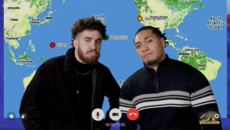
Micromen hack your TikTok | Guamtok
Welcome to Guamtok! Unfortunately, we seem to only be scrolling through the same two guys on this algorithm, but nonetheless, these two guys take us through a few snappy vids we might see as we enter the digital world of Guam.
-
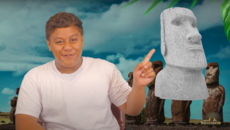
The History of Rapa Nui | Cultural Reset
The young and talented Epeli gives us a lesson in Pacific history according to his studies. He gives us a look at the history of Rapa Nui, also known as Easter Island. The Pacific island is known for its iconic and famous Moai stone statues but what a lot of people don't know if their colonial history and present-day indigenous struggles. - "Cultural Reset" unpacks relevant social and political issues, and how they're tied back to complicated histories.
-
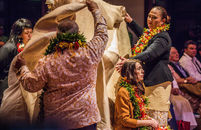
What is an Ifoga? and the NZ Governments Symbolic Ifoga / Fa'amaualaloga
Fa'amaualaloga - the act of seeking forgiveness with humility. Fa'amāgaloga - The act of forgiving. The age old protocol of the Samoan ifoga is explained here, as a communal gesture of offering up remorse, of seeking forgiveness and healing a Vā in Samoan culture. The NZ government re-enacted a symbolic ifoga to the Pasifika people of Aotearoa, for the injustices and breaching of human rights caused by the NZ government during the Dawn Raids era of persecution. This enactment or 'Fa'amaualaloga' was performed by members of the Labour Party Pasifika caucus, presented to the Pasifika community and representatives at the Auckland Town Hall on Aug 1st 2021. The representatives were Rev Setaita Taumoepeau K Veikune (MNZM), Falema'i Lesa Sega who won her citizenship from the Privy Council, Taimalieutu Papali'i Kiwi Tamasese, descendant of Mau leaders imprisoned in Mount Eden by New Zealand and Aupito Pupu Lolesio, whose home was dawn raided in the early hours of the morning in Otara.
-
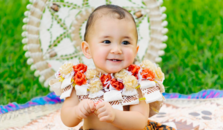
Kemems: The Big Marshallese Celebration
In the Marshall Islands, there is one special birthday of great importance. It’s not a 40th or 21st, but the 1st birthday. The day that marks a childs one year on Earth is called a Kemem. Historically Kemems were celebrated because of the high infant mortality rate in these islands. It comes from the term "kemejmej" (to remember). There were no medical doctors back in the day, therefore, a baby making it to their first year was marked as the most important celebration. Especially when it's the eldest boy or eldest girl, as it’ll be the family’s first child to reach this milestone. {{23355}} On the actual birthdate, family and friends come at night for a special gathering. This mostly occurs around midnight at the exact moment the clock hits the birthday hour. The child is placed on a special woven mat and everyone sings happy birthday to them. During this gathering something called the “tōptōp” takes place, a cultural practice whereby guests are invited to take what they want to from the birthday child and their family. People can take things like shoes, chairs, the tv, phones and some rare instances even cars. Guests can even take the clothes that the birthday boy or girl is wearing. The less the family are left with after the guests leave the more generous the family is seen and labelled. {{23360}} People say this is actually a modern tradition. According to the elders, tōptōp didn’t take place way back then. They would gather at the child’s home, sing, and give gifts to bless the child because he/she made it to their first year of life. Kemems are always hosted by family. Everyone who is invited (extended family, friends and community) will be fed and entertained by the host family. {{23366}} The immediate family decides who contributes what from the mothers and fathers side. From food to decorations to material. The material is a printed fabric that families usually wear as a uniform. Nowadays, if friends or extended family members want to match with the immediate family, the immediate family will reserve the material and the extended family can go purchase it themselves. Traditionally local food would be cooked in a umum (earth oven) for this special occasion. Pork, fish, chicken, turtle, coconut crab, breadfruit, taro, and coconuts. Today more modern dishes are included. Items such as rice, potato salad, coleslaw, barbeque chicken, cakes and so on. {{23369}} During the kemem, balloons, blankets, fans and other things will be hung up as decorations. These can also be used as party favours. As for formalities, usually the pastor will begin with a prayer for both the baby and food. Then afterwards, people can start lining up to dish their food, performers start dancing, and everyone can take down the decorations to keep. The centrepieces and other items that are on the tables will be up for grabs too for those who attended and are seated at the kemem. {{23373}} Usually, everyone is seated according to their weto (family land), elders and heads of families. Relatives would give speeches towards the end to say thank you. Then everyone would line up, sing happy birthday again and gives congratulations and place money on the mat. It is common to see family members with the child’s name printed on t-shirts and DJ entertainment accompanies the more traditional singing. {{23387}} As kemems continue to grow and evolve as time goes on, the meaning and importance of celebrating life behind all the festivities remain the same. The day is a special one for Marshallese families to gather and show appreciation for life, especially for their little ones that are only at the beginning. The birthday child may not remember their first birthday, but with celebrations so big everyone else most certainly will. {{23390}}
-

General Fiyah on the Pacific Food Debate | Cultural Reset
General Fiyah answers the question "Is the modern Pacific diet a colonial legacy?" "Cultural Reset" unpacks relevant social and political issues, and how they're tied back to complicated histories.
-
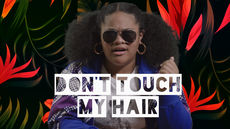
The Pacific Hair Journey | Cultural Reset
Our girl Abi explains the story of our natural Pacific hair. The new wave of Pacific people who are decolonizing the way they think of our natural locs has inspired Abi to look into the origins of our hair norms, the history, and now the impact of western ideas of beauty standards. This Cultural Reset is all about the Pacific hair stories, why they are important, and how people are resetting their minds about how we treat our hair! - "Cultural Reset" unpacks relevant societal issues to the Pacific community, and how they're tied back to complicated histories. It is a look into topics ranging from Cultural Appropriation to Climate Change. Each important topic is broken down by one of our village's youngest. Our kids are taking the reigns and schooling us on pressing social, political, and environmental issues.
-
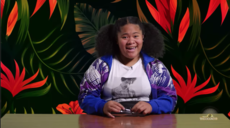
How the Pacific was split | Cultural Reset
This week on Cultural Reset Abi explains how the Pacific was split into three regions. Abi goes through the creation of the terms Melanesia, Polynesia, and Micronesia. She also touches base on how the splitting of our ocean still impacts our region today and how it made way for a thing called "Polycentrism". Sit in and listen to some straight facts from our intelligent youngins! "Cultural Reset" unpacks relevant societal issues to the Pacific community, and how they're tied back to complicated histories. It is a look into topics ranging from Cultural Appropriation to Climate Change. Each important topic is broken down by one of our village's youngest. Our kids are taking the reigns and schooling us on pressing social, political, and environmental issues.
-
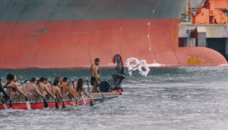
Waka Taua Explained | Cultural Refresh
The waka taua is the carved Māori war canoe. In old times it was used to travel war parties to battle, these days they are used for ceremony and to strengthen identity and keep our culture and tikanga alive. Tamahau Tangitu is one of the kaitiaki of Takitimu - a waka taua of Tauranga. He tells us what waka taua means to him and to te iwi Māori. - ‘Cultural Refresh’ is a series that explores Moana cultural practices and taonga, presented for our new generations of young Pasifika people. -
-
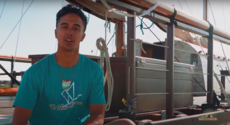
Waka Hourua Explained | Cultural Refresh
Waka hourua is the Māori name for the double hulled vaka. Turoa Kohatu, a young sailor/navigator, explains what he loves about waka hourua and some of the parts of the waka. - ‘Cultural Refresh’ is a series that explores Moana cultural practices and taonga, presented for our new generations of young Pasifika people. -
-
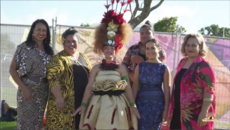
Pacific Dance Costumes Explained | Cultural Refresh
Straight from the bright stages of Polyfest, 4 cultural guides explain an important element in their island's dance costuming. Liana Vaipa Rice explains the Niuean Hihi (shell necklaces). Meile Suipi Fakatava Latu explains the Tongan Lolo (coconut oil used in Tongan dancing). Pauliasi Bauleka and Nunia Turagabeci explain the Fijian facial dots (markings seen in Fijian dance). Ella Loheni Stancil explains the Samoan Tuiga (crown worn by the main Samoan dancer). - ‘Cultural Refresh’ is a series that explores Moana cultural practices and taonga, presented for our new generations of young Pasifika people. -
-
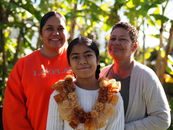
Fijian Salusalu Explained | Cultural Refresh
Rae Dawn Matagi explains the significance of the Fijian Salusalu and breaks down how they are made. Salusalu (pronounced as sar-loo-sar-loo) is Fijian for garland. It can be described as a necklace of flowers woven together by strands of vau (dried bark of wild hibiscus). A salusalu is made from colourful and scented flowers and is commonly worn around the neck and presented to a visitor as a sign of one’s appreciation. - ‘Cultural Refresh’ is a series that explores Moana cultural practices and taonga, presented for our new generations of young Pasifika people. -
-
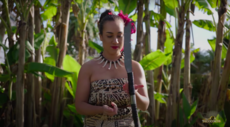
Samoan Nifo Oti | Cultural Refresh
Siva Samoa Dancer Ella Loheni-Stancil explains the origins, function, and spiritual weight of the Samoan Nifo Oti. The Nifo Oti is a Samoan ceremonial knife used commonly in Samoan dancing. In this segment, we rehash the history of this cultural element and refresh our memories on why it is so important in Samoan culture. - ‘Cultural Refresh’ is a series that explores Moana cultural practices and taonga, presented for our new generations of young Pasifika people. -
-
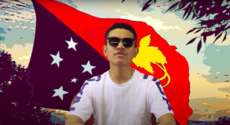
Fuzzy Wuzzy Angels Explained by General Fiyah | Cultural Reset
We take a trip through the history of some legendary unsung heroes from Melanesia. Fuzzy Wuzzy Angels was the name given by Australian soldiers to Papua New Guinean war carriers who, during World War II, were recruited to bring supplies up to the front and carry injured Australian troops down the Kokoda trail. General Fiyah takes a look into this history and gives us a summary on what he found about these great angels. "Cultural Reset" unpacks relevant societal issues to the Pacific community, and how they're tied back to complicated histories. It is a look into topics ranging from Cultural Appropriation to Climate Change. Each important topic is broken down by one of our village's youngest. Our kids are taking the reigns and schooling us on pressing social, political, and environmental issues.
-
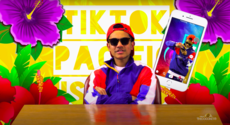
Is TikTok stealing ideas from Pacific Creators? | Cultural Reset
General Fiyah is back to answer the question around TikTok stealing and copying with no credit to Pacific creators. Pacific TikTok has been the home of so many mainstream trends on the platform, from siren beats to island choreography. But why is the top creators on island sounds not the original creators? General Fiyah investigates ... - "Cultural Reset" unpacks relevant societal issues to the Pacific community, and how they're tied back to complicated histories. It is a look into topics ranging from Cultural Appropriation to Climate Change. Each important topic is broken down by one of our village's youngest. Our kids are taking the reigns and schooling us on pressing social, political, and environmental issues.
-
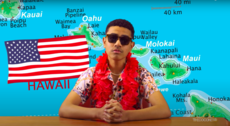
The origins of Aloha Oe | Cultural Reset
General Fiyah breaks down the history of the famous Hawaiian mele "Aloha Oe" and how it was written by the late Queen of Hawaii, Her Majesty Liliuokalani. "Aloha Oe" meaning "a farewell to thee" is a common cultural symbol for Hawaii and one that spread across the Pacific. It was made iconic in Pop Culture through the Disney movie Lilo & Stitch, where Nani is seen singing to Lilo as they sit on a hammock. - "Cultural Reset" unpacks relevant societal issues to the Pacific community, and how they're tied back to complicated histories. It is a look into topics ranging from Cultural Appropriation to Climate Change. Each important topic is broken down by one of our village's youngest. Our kids are taking the reigns and schooling us on pressing social, political, and environmental issues.
-
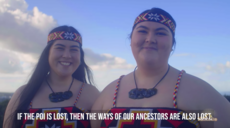
Poi Explained | Cultural Refresh
Kapahaka sisters Gracie & Kimaia Kōpua tell us about the poi and why it's significant in Maori culture. “POI” is the Maori word for “ball” on a cord. Many years ago the indigenous Maori people of New Zealand used it to increase their flexibility and strength in their hands and arms as well as improving coordination. - ‘Cultural Refresh’ is a series that explores Moana cultural practices and taonga, presented for our new generations of young Pasifika people. -
-
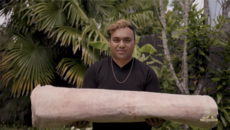
Tonga Ngatu Explained | Cultural Refresh
Bronson Aerenga-Seiuli explains the art of making Tongan Ngatu. He tells the story of this special decorated barkcloth and the part it plays in Tongan culture. Ngatu is the Tongan name given to tapa cloth. It is made from the inner bark of Hiapo (paper mulberry tree). The pieces of bark are beaten with a mallet, widened, and joined together to make larger pieces of cloth. Groups of women work together to decorate the cloth with natural dyes and pigments. Bronson unpacks this in this Cultural Refresh. Cultural Refresh is a segment that explores cultural elements and practices that have been passed on through generations of Pacific Islanders. Whether you're learning something for the first time or jogging your memory the Cultural Refresh is for you! Rehashing traditional knowledge from the past for our current and future generations.
-
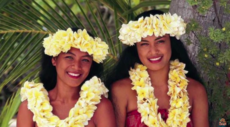
Things you should know about the Cook Islands
Catch more on Fresh Saturday 10am TV2
-

NIUE - Fun Facts!
We've put together some fun facts about the Rock of Polynesia - NIUE - just for you!
-

What Pacific Islanders Want you to Know
Pacific Islanders dispel stereotypes and give some real history on their Pacific Island nations.
-
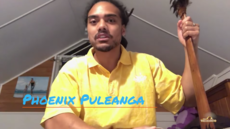
Phoenix Pule'anga - Niue Language Week
Teacher aide & performing artist Phoenix Pule'anga shares a bit about his background, his Niuean language learning journey and shares a phrase for us to learn.
